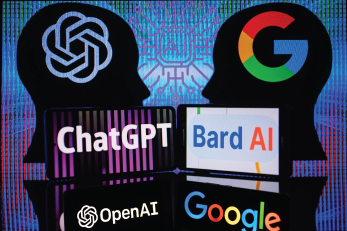Artificial intelligence (AI) is no longer confined to the realm of science fiction. Once a futuristic concept, AI has now become a transformative force that is reshaping industries, streamlining operations, and redefining business success. Yet for many business leaders, the journey from curiosity about AI to its successful implementation can seem overwhelming. How do you get started? How do you cut through the noise and hype? Most importantly, how can you leverage AI to boost profits, enhance efficiency, and gain a competitive edge?
This comprehensive guide aims to demystify AI and provide actionable insights to help you integrate AI into your business with confidence and clarity. By understanding the fundamentals, exploring real-world applications, and adopting strategic approaches, you can position your organization to thrive in the AI-driven future.
Chapter 1: Understanding AI Basics
Before diving into applications, it’s essential to grasp the foundational concepts of AI. Here’s a breakdown:
What is AI?
Artificial Intelligence refers to the simulation of human intelligence in machines that are programmed to think, learn, and make decisions. It encompasses a range of technologies, including:
- Machine Learning (ML): Algorithms that enable systems to learn from data and improve over time without explicit programming.
- Deep Learning: A subset of ML that uses neural networks to mimic human brain processes for tasks like image recognition and natural language processing.
- Natural Language Processing (NLP): The ability of machines to understand, interpret, and respond to human language.
Why Does AI Matter?
AI enhances decision-making by analyzing massive amounts of data and uncovering patterns and insights that would otherwise remain hidden. It’s a key enabler of:
- Automation
- Personalization
- Predictive analytics
Myths vs. Reality
One of the biggest barriers to adoption is misunderstanding what AI can and cannot do. AI is not a magical solution that solves all problems. Instead, it’s a tool that requires thoughtful integration to deliver results.
Chapter 2: Practical Use Cases of AI in Business
AI’s potential spans across industries, offering diverse applications. Below are some real-world examples:
1. Customer Experience Enhancement
- Chatbots and Virtual Assistants: Tools like ChatGPT are revolutionizing customer support by providing instant, accurate responses.
- Personalized Recommendations: E-commerce platforms like Amazon use AI to suggest products based on browsing history, driving sales.
2. Operational Efficiency
- Predictive Maintenance: Manufacturing companies use AI to predict equipment failures, reducing downtime.
- Inventory Management: AI algorithms forecast demand, optimizing stock levels and reducing waste.
3. Revenue Growth
- Dynamic Pricing: Airlines and hotels use AI to adjust prices in real-time based on demand.
- Sales Forecasting: AI analyzes historical data and trends to predict future sales.
4. Risk Management
- Fraud Detection: Financial institutions leverage AI to detect unusual transactions.
- Cybersecurity: AI identifies vulnerabilities and monitors threats in real-time.
Chapter 3: Overcoming Challenges
AI implementation is not without its hurdles. Common challenges include:
1. Technical Complexity
Understanding the technical aspects of AI can be intimidating. Partnering with experts and leveraging user-friendly platforms can ease the learning curve.
2. Internal Resistance
Change often meets resistance. Building a culture of innovation and communicating the benefits of AI are critical to gaining employee buy-in.
3. Ethical Concerns
AI raises questions around privacy, bias, and accountability. Adopting ethical guidelines and ensuring transparency can help mitigate risks.
4. Cost and ROI
AI requires upfront investment, and the returns may not be immediate. Clear goals and pilot projects can demonstrate value before scaling up.
Chapter 4: Building Your AI Roadmap
To successfully integrate AI, follow these steps:
1. Define Clear Objectives
Identify specific problems AI can solve within your business. Whether it’s improving customer service or automating processes, clarity of purpose is key.
2. Start Small
Pilot projects allow you to test AI on a smaller scale, learn from the experience, and refine your approach before wider implementation.
3. Choose the Right Tools
Selecting the right AI technologies depends on your business needs. Collaborate with vendors and experts to find tailored solutions.
4. Build a Skilled Team
Upskilling your workforce and hiring AI talent ensures you have the expertise to manage and optimize AI initiatives.
5. Measure and Adapt
Continuously monitor the impact of AI on your business. Use metrics to assess performance and make adjustments as needed.
Chapter 5: Expert Frameworks and Actionable Guides
Adopting AI requires strategic planning. Here are frameworks to guide your journey:
Framework 1: The AI Maturity Model
Evaluate your organization’s AI readiness based on:
- Awareness
- Experimentation
- Integration
- Optimization
Framework 2: The AI Canvas
Map out AI initiatives by answering the following questions:
- What is the problem?
- What data is needed?
- What technology will be used?
- What is the expected outcome?
Chapter 6: Unlocking AI’s Potential
The potential of AI is vast, but success depends on strategic execution. By understanding AI concepts, exploring practical applications, overcoming challenges, and building a clear roadmap, you can harness AI to:
- Enhance customer experiences
- Automate routine tasks
- Optimize operations
- Drive innovation and growth
AI is not just a technological advancement—it’s a competitive advantage. The businesses that embrace it today will lead the industries of tomorrow.
Ready to take the next step? Start small, think big, and let AI drive your business into the future. Whether you’re enhancing customer engagement, streamlining operations, or unlocking new revenue streams, AI offers unparalleled opportunities for growth and success.


